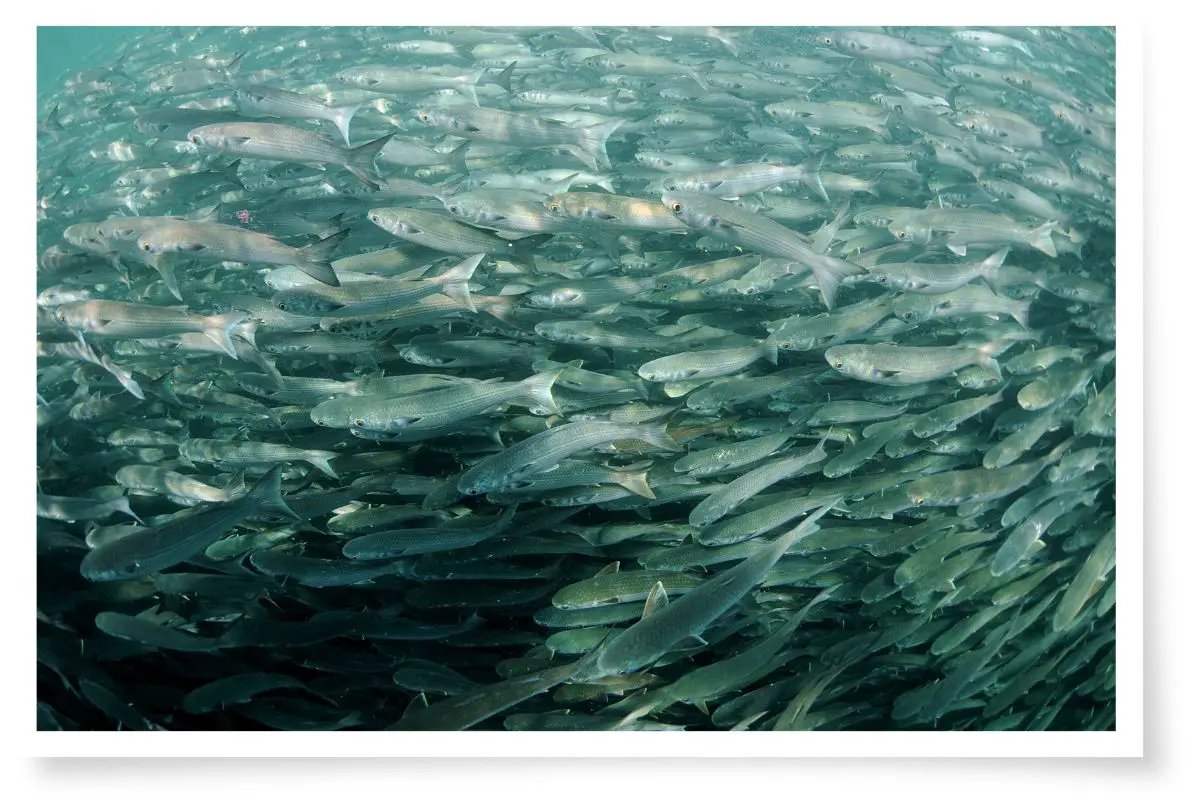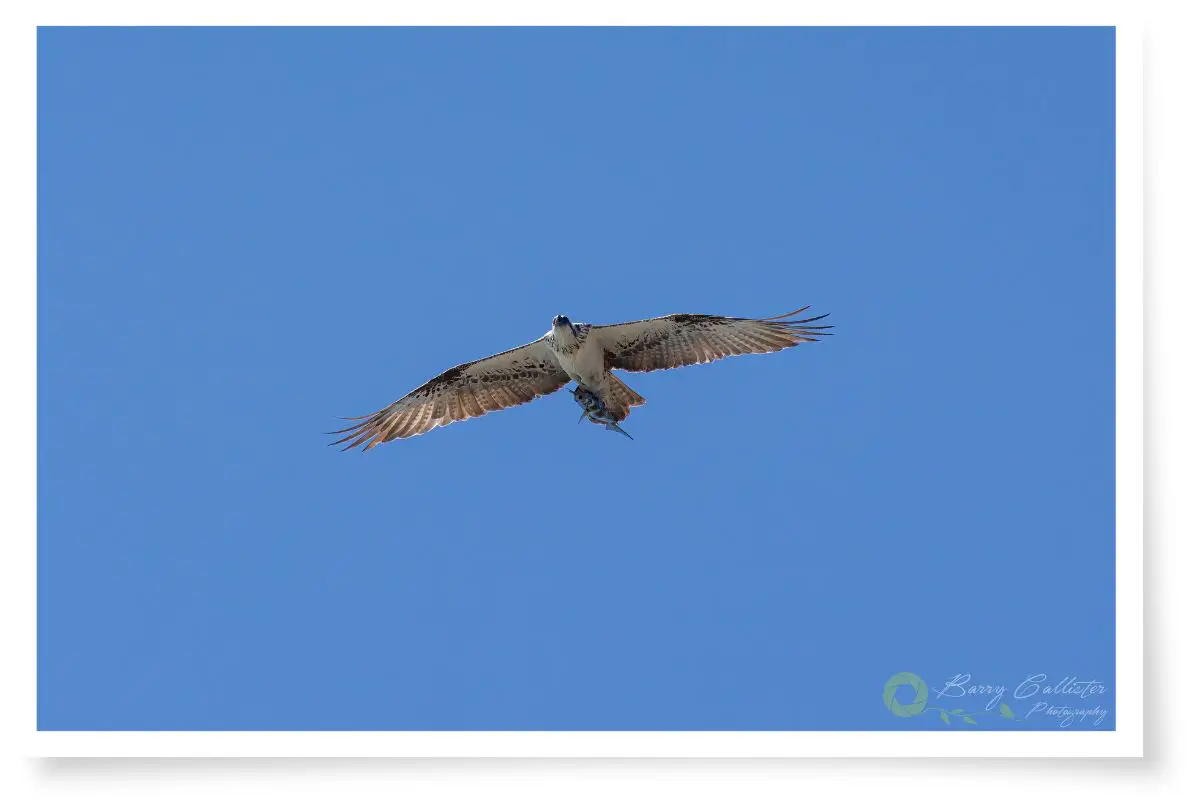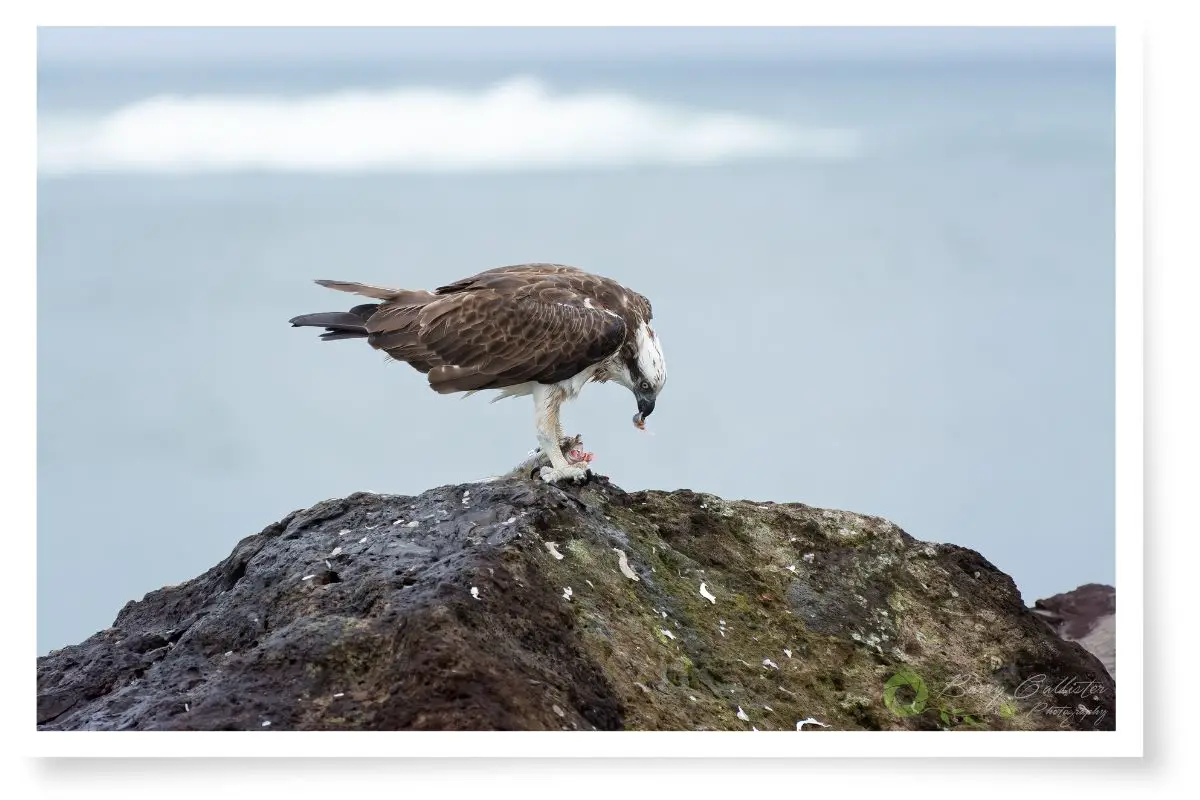Ospreys are a bird that is perfectly designed for catching their preferred prey. They are the only raptors that plunge dive, and they have spiny pads on their feet, double-jointed toes, and huge talons for gripping. In this article, I will tell you exactly what Ospreys eat from my own eyewitness accounts and information gathered from various bird resources.
Ospreys eat fish; in fact, over 99% of their prey consists of live fish. Occasionally, they will scavenge recently dead or dying fish. They have been reported eating other small animals such as snakes, birds, voles, squirrels, muskrats, salamanders, mollusks, and even small alligators.
Continue reading to discover much more about what ospreys eat. You will see images I have taken of them catching and eating their prey and watch video footage I filmed of an osprey eating a fish just 8 meters away.
As an Amazon Associate, I earn from qualifying purchases. Birdwatch World earns commissions from Amazon and similar affiliate programs from any purchases made via links in this article.
What Fish Do Ospreys Eat?
Ospreys will take whatever surface or shallow water fish they can catch. They generally take fish between 150 and 300 g (5.3 oz. – 10.6 oz.) as these are easier for them to carry from the water. Occasionally, they will take smaller fish or some between 500 and 1200 grams (1.1 lbs – 2.6 lbs).
The type of fish ospreys eat depends on where they live, whether they hunt in fresh or salt water, and what fish are available at the time of year. A popular fish for ospreys feeding along tropical and subtropical coastlines is Mullet. These fish swim in tight schools in shallow water and they are rich in fats.

Discover 10 Australian birds that eat fish in this article on my blog.
More detailed information about the species of fish osprey eat in various parts of the world is in the table below:
| Location | Fish Species |
|---|---|
| Nova Scotia and Southern New England | Winter Flounder Herring Menhaden Pollock |
| Northern Europe | Pike Bream Carp Trout |
| Florida | Sunfish Shad Gizzard Threadfin Black Crappie Sunfish Largemouth Bass Mullet Speckled Trout Striped Mullet Sea Catfish |
| Australia (NSW north coast) | Sea Mullet Yellowfin Bream |
| Montana | Largescale Sucker Salmon Trout |
| Wyoming | Utah Sucker Carp Minnow Salmon Trout |
| Oregon | Carp Black Crappie Salmon Trout Tui Chub |
| Idaho | Northern Squawfish Peamouth Chub Salmon Trout Bullheads Yellow Perch |
| California | Tui Chub Rainbow Trout Tahoe Suckers Surfperch |
| British Columbia | Tui Chub Rainbow Trout Tahoe Suckers |
| Minnesota | Black Crappie Bluegills |
| New York | Menhaden Bluefish |
| Southeast Alaska | Starry Flounder |
| Central and South America | Mullets Pompanos |
Here where I live on the Mid North Coast of New South Wales in Australia, osprey will regularly take mullet, bream, morwong, and banded rock cod. Rock cods are very sedentary and will lay on rocks in the shallows; apparently, you can pick them up with your hands so they would be an easy catch for an osprey.

Learn how birds digest food in this article on my site.
How Many Fish Does An Osprey Eat In A Day?
An Osprey will eat between 1 and 3 fish per day. How much an individual bird eats will depend on its sex, age, and its daily energy requirements. The type and size of fish consumed also affect how many will have to be eaten; if the fish are smaller, the osprey will have to consume more of them.

Asking how many fish an osprey eats in a day is kind of like asking “how long is a piece of string?” There are so many factors that affect how much food any particular bird will have to consume that it’s nearly impossible to figure out.
So, if it’s nearly impossible to figure out how many fish per day an osprey eats, how did I come up with a total of between 1 to 3 fish? Let me explain…
One study in Idaho observed that 4.6 fish per day were delivered to nests containing 2 young, and 5.6 fish per day to nests with 3 young. Most of the hunting is done by male birds and they will feed themselves, their mate, and the young. Other studies have reported an average of 5.4 fish/day.
A study by G. P. Clancy of osprey on the north coast of New South Wales in Australia reported 6 fish per day being delivered to a nest containing 2 nestlings. The same study mentions a nest in Hemmant, Queensland with a large nestling two weeks from fledging where 7.3 fish per day were brought to the nest.

In the Idaho study, researchers estimated that 794 g (1.8 lbs) of fish per day were required for 2 young and 1 adult bird. A brood of 3 plus one adult would require approximately 1048 g (2.3 lbs) per day to match their energy requirements.
The daily energy requirements for any particular osprey are going to depend on many factors: how many young it is feeding, how far it has to go for food, the weather conditions/season, how many unsuccessful hunting attempts it has, and more…
Between 1 and 3 fish per day is possibly a rather low average but without spending months researching this in the field, it’s as close to accurate as I’m going to get.
Discover what Seagulls eat in this post here on Birdwatch World.
Do Ospreys Eat Birds?
Ospreys do eat other birds, though this is very rare. Some species they have been reported eating are crows, black-crowned night herons, storm petrels, sandpipers, chickens, jackdaws, ducks, herring gulls, coots, cardinals, lapwings, and grebes.
I have never seen an osprey taking another bird. I have seen the carcass of a cormorant lying beneath an osprey nest on an old building on South Solitary Island off the coast of Moonee Beach in New South Wales.

Whether the birds were eating the cormorant is not clear; the carcass seemed to be untouched. There was however no reason for the dead cormorant to be there unless it had been brought there by an osprey.

Do Ospreys Eat The Whole Fish?
The answer to this question depends on the size of the fish. If a fish is small, Ospreys will consume it entirely but with larger fish, they will discard many parts.
Ospreys will start eating the head of a fish, starting near the mouth; most of the time while it is still alive. They will discard the opercular bones (facial support structure and covering for the gills) within the first few minutes.
At the beginning of the video below from an encounter I had recently with a feeding osprey, you can see it struggling with an opercular bone, twisting its head to try and remove it.
You can see the parts of the fish the bird is discarding on the rock beneath it. A lot of it is scales but there are also pieces of bone and other tiny bits of flesh that have dropped when being torn off. I noticed a lot of flesh dropping away as the bird was ripping at the carcass with its beak. Imagine only being able to eat with your mouth; you would also drop a lot of food.
When eating a mullet, most osprey will consume the entire fish. Some birds will leave the viscera (internal organs) and occasionally the fins. Another thing birds will not eat is the spines of a fish. In the case of Yellowfin Bream, osprey will discard the anal spines. In the case of Blue Catfish and Fan-belly leather jackets; the birds will routinely discard the dorsal and pectoral spines of these fish.
Each bite is about 0.6 g (0.02 oz) of meat (Poole, 1989). An individual may consume around 300 g (10.6 oz) in a meal so that is 500 bites before the bird will be satiated. If the weather is warmer, an osprey will discard the uneaten portion of fish, but it may carry the leftovers around for a while during cooler months.
References
- Birds Of The World – The Cornell Lab Of Ornithology.
- Feeding Behavior Of The Osprey Pandion haliaetus On The North Coast Of New South Wales – Greg P. Clancy.
- Handbook Of The Birds Of The World Volume 2 – Josep del Hoyo, Andrew Elliott, Jordi Sargatal

